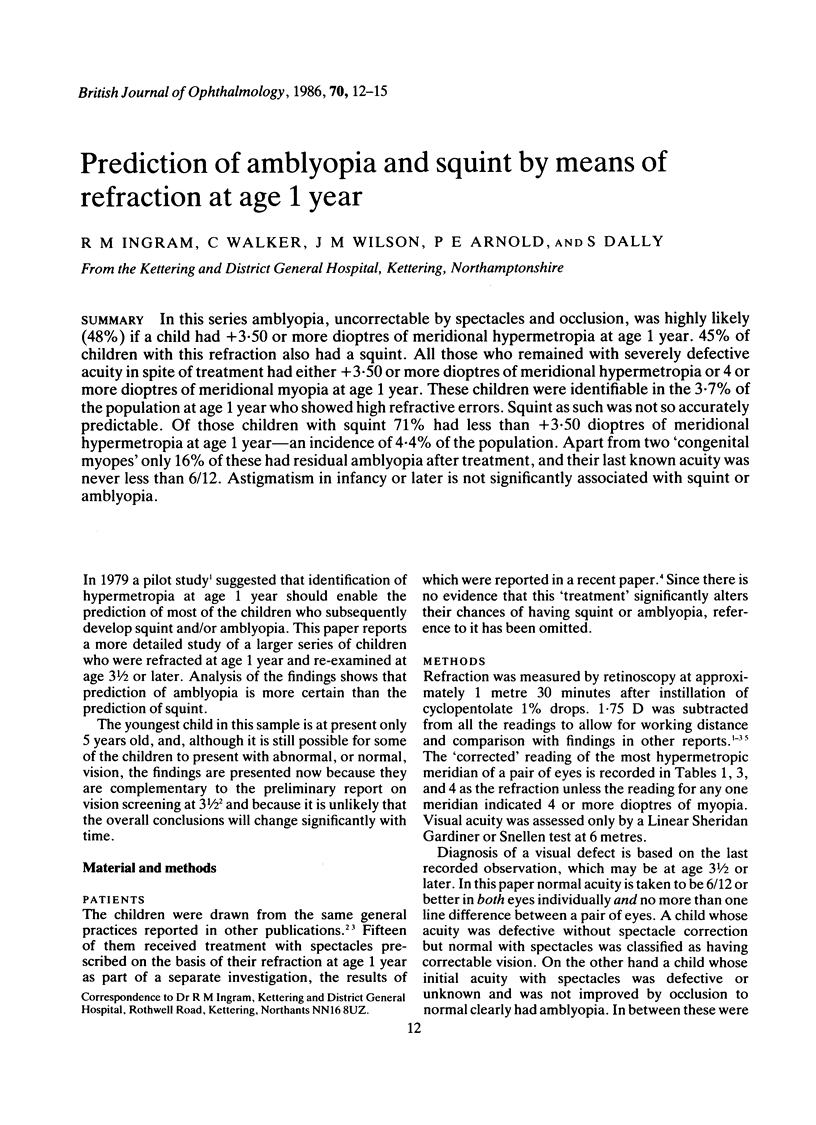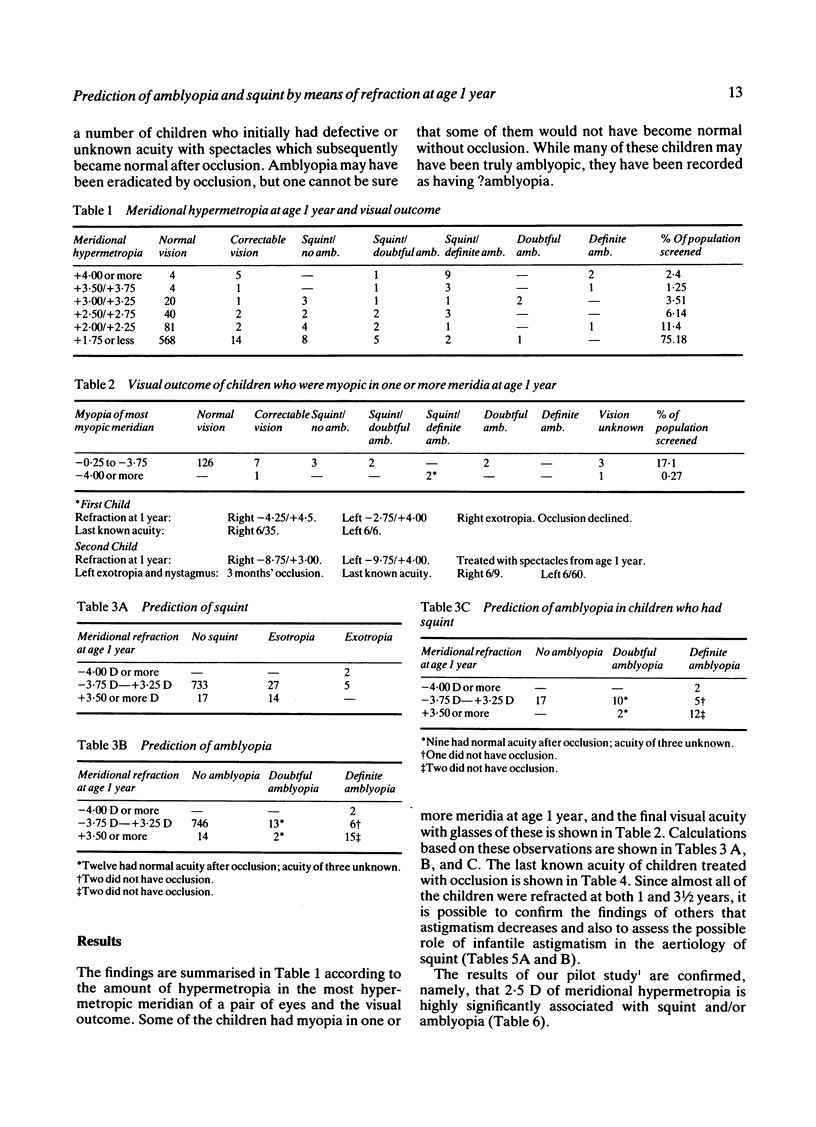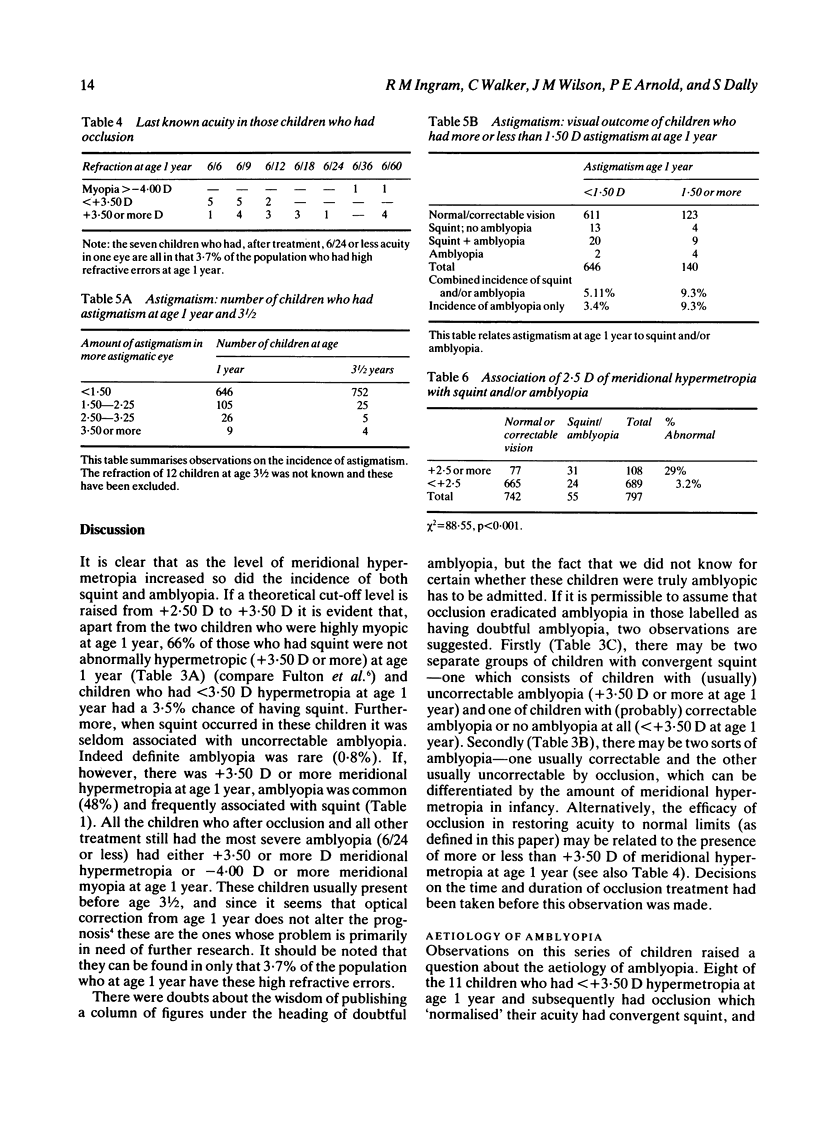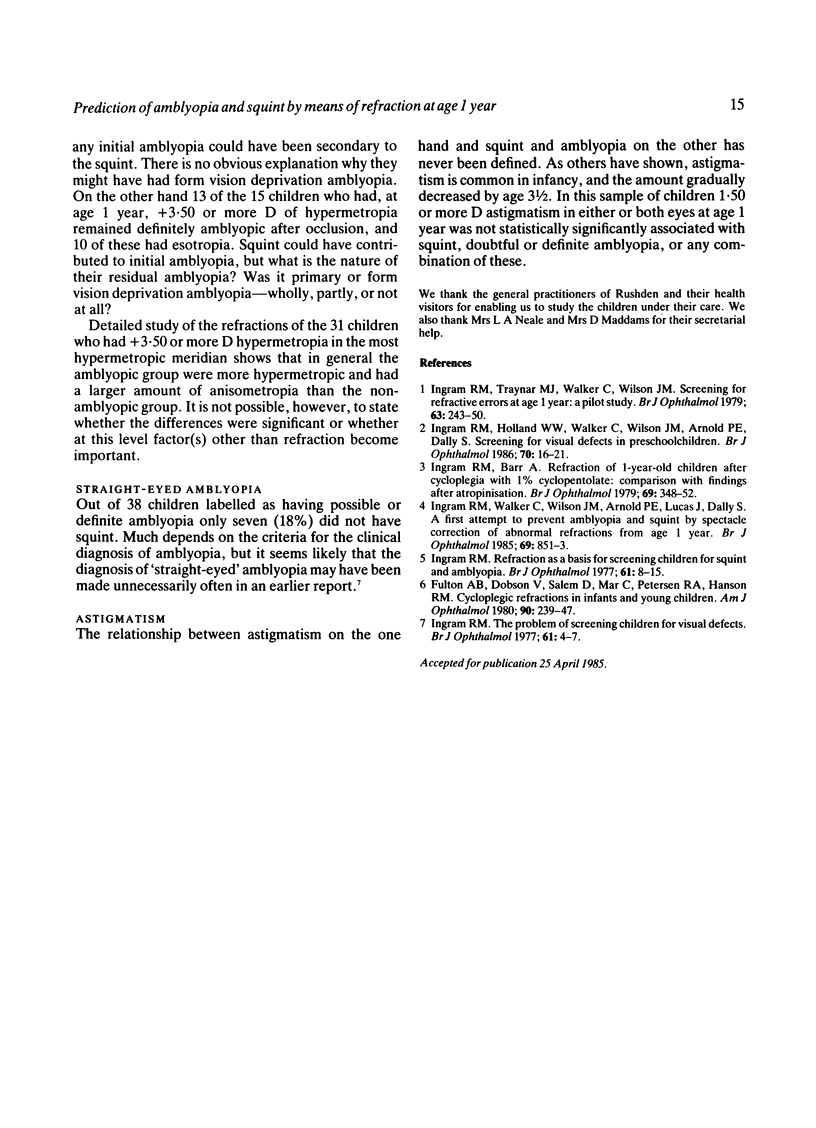Abstract
In this series amblyopia, uncorrectable by spectacles and occlusion, was highly likely (48%) if a child had +3.50 or more dioptres of meridional hypermetropia at age 1 year. 45% of children with this refraction also had a squint. All those who remained with severely defective acuity in spite of treatment had either +3.50 or more dioptres of meridional hypermetropia or 4 or more dioptres of meridional myopia at age 1 year. These children were identifiable in the 3.7% of the population at age 1 year who showed high refractive errors. Squint as such was not so accurately predictable. Of those children with squint 71% had less than +3.50 dioptres of meridional hypermetropia at age 1 year--an incidence of 4.4% of the population. Apart from two 'congenital myopes' only 16% of these had residual amblyopia after treatment, and their last known acuity was never less than 6/12. Astigmatism in infancy or later is not significantly associated with squint or amblyopia.
Full text
PDF



Selected References
These references are in PubMed. This may not be the complete list of references from this article.
- Fulton A. B., Dobson V., Salem D., Mar C., Petersen R. A., Hansen R. M. Cycloplegic refractions in infants and young children. Am J Ophthalmol. 1980 Aug;90(2):239–247. doi: 10.1016/s0002-9394(14)74861-5. [DOI] [PubMed] [Google Scholar]
- Ingram R. M., Barr A. Refraction of 1-year-old children after cycloplegia with 1% cyclopentolate: comparison with findings after atropinisation. Br J Ophthalmol. 1979 May;63(5):348–352. doi: 10.1136/bjo.63.5.348. [DOI] [PMC free article] [PubMed] [Google Scholar]
- Ingram R. M., Holland W. W., Walker C., Wilson J. M., Arnold P. E., Dally S. Screening for visual defects in preschoolchildren. Br J Ophthalmol. 1986 Jan;70(1):16–21. doi: 10.1136/bjo.70.1.16. [DOI] [PMC free article] [PubMed] [Google Scholar]
- Ingram R. M. Refraction as a basis for screening children for squint and amblyopia. Br J Ophthalmol. 1977 Jan;61(1):8–15. doi: 10.1136/bjo.61.1.8. [DOI] [PMC free article] [PubMed] [Google Scholar]
- Ingram R. M. The problem of screening children for visual defects. Br J Ophthalmol. 1977 Jan;61(1):4–7. doi: 10.1136/bjo.61.1.4. [DOI] [PMC free article] [PubMed] [Google Scholar]
- Ingram R. M., Traynar M. J., Walker C., Wilson J. M. Screening for refractive errors at age 1 year: a pilot study. Br J Ophthalmol. 1979 Apr;63(4):243–250. doi: 10.1136/bjo.63.4.243. [DOI] [PMC free article] [PubMed] [Google Scholar]
- Ingram R. M., Walker C., Wilson J. M., Arnold P. E., Lucas J., Dally S. A first attempt to prevent amblyopia and squint by spectacle correction of abnormal refractions from age 1 year. Br J Ophthalmol. 1985 Nov;69(11):851–853. doi: 10.1136/bjo.69.11.851. [DOI] [PMC free article] [PubMed] [Google Scholar]


